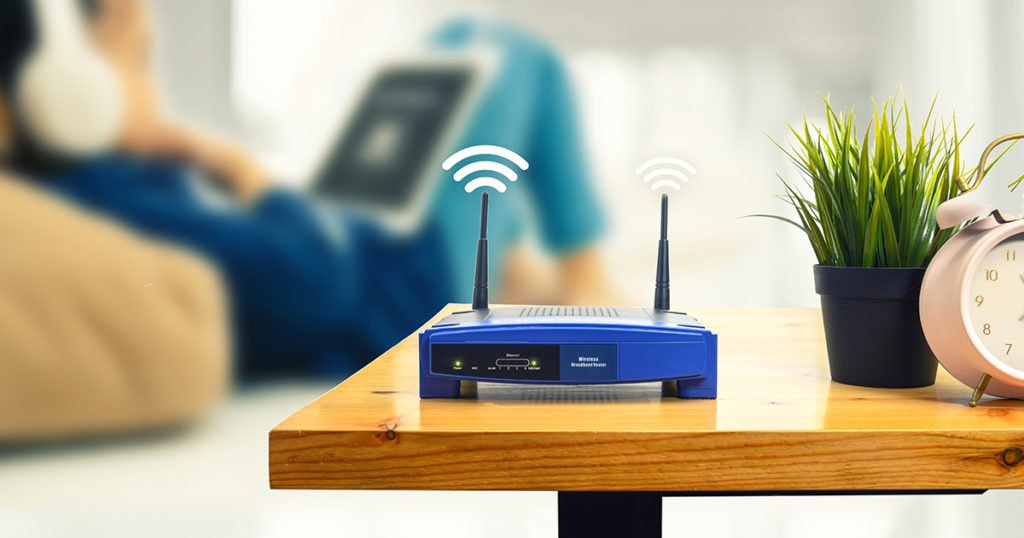How to fix Wi-Fi “dead spots” in your home
Weak Wi-Fi or a loss of signal can disrupt your work, study, or entertainment. If you’ve ever been frustrated by Wi-Fi “dead zones” in your home, here are some effective ways to fix it.
Many people have also encountered the situation where their laptop, phone or tablet suddenly “lost” the Wi-Fi signal in a certain location in the house. In this case, the Wi-Fi “dead spot” is said to be the cause of this situation. In fact, almost every house has areas where the network signal is weak or completely gone, causing discomfort when you need to connect to work, study or entertain.
According to Dhruv Bhutani, a writer specializing in smart homes and networks for CNET, the most common causes of this phenomenon are distance from the router, obstacles like walls and furniture, interference from other electronic devices, or improper router placement, or sometimes a combination of all of these factors.

A recent CNET survey also found that 63% of US consumers have seen their monthly internet costs rise, making optimizing your home Wi-Fi network more important than ever.
With the guide below, you will know how to identify the exact cause of Wi-Fi “dead spots” and fix them, to enjoy strong, stable connections in every space in the house.
How to diagnose and fix Wi-Fi “dead spots” in your home
If your home Wi-Fi network has areas where your phone, laptop, or smart TV frequently drops signal, these are Wi-Fi “dead spots,” areas where the signal is so weak that it’s almost unusable. Identifying these “dead spots” is the first step to improving the quality of your entire home’s internet connection.
1. Check network speed at different locations
The simplest and most effective way to spot dead zones is to run a speed test, says Joe Supan, senior broadband reporter at CNET.
“This test will tell you important information like download speed, upload speed, latency and stutter,” Supan explains. “You just take your phone, move it to the area where you suspect there is a “dead spot” and do the speed test there.”
Take a walk around your home, especially in areas where you frequently use the internet, such as the living room, office, or near the front door. If your speed is significantly lower than your plan’s average speed, or if it’s significantly different from other areas of your home, you’ve likely found a Wi-Fi “dead spot.”
2. Map network signals for further analysis
For users who want to better understand their Wi-Fi coverage, expert Dhruv Bhutani recommends using a Wi-Fi analyzer app on their phone to map the signal.
Two of the top recommended tools are NetSpot and Fing, both available on Android and iOS. Once installed, you just have to move around your house, letting the app measure the signal strength (RSSI – Received Signal Strength Indicator), measured in dBm.
Bhutani says -30 dBm indicates a very strong signal, while -70 to -80 dBm is weak, and anything lower is almost unusable. “The closer to zero, the better the signal,” he says. Mapping out your coverage areas will help you visualize where they are weak, making it easier to plan for improvement.
How to quickly fix Wi-Fi “dead spots”
Once you’ve identified the weak spots, the next step is to fix the cause. Experts say most Wi-Fi problems come from physical barriers or poor device placement.
1. Check for obstructions and space layout
Thick walls, concrete floors, metal cabinets, or even fish tanks and other electronic devices can absorb or reflect Wi-Fi signals, causing speeds to slow down. Try moving your router to a more open location, away from furniture or hidden corners in your home.
2. Optimize router placement
As recommended by Joe Supan, the router should be placed in a central location in the house, about 1 meter off the ground and away from walls or large obstructions.
“Many people put their routers on TV shelves or under their desks for neatness, but that inadvertently creates Wi-Fi “dead zones,” Supan said.
Some current router models also support ceiling mounting, helping to cover the entire house. Although not required, this is a choice worth considering for multi-story houses.
3. Adjust the antenna
If your router has adjustable antennas, try changing the orientation, one antenna vertical and one horizontal to ensure better signal spread both horizontally and vertically, especially in multi-room or multi-story buildings.
4. Restart the router
This is a basic but extremely effective solution. Dave Coleman, Director of Wireless Networks at the technology company Extreme Networks (USA), said: "Simply restarting the router can solve up to 90% of connection problems."
Just like your computer or phone, your router needs to “rest” periodically to clear its cache and refresh its processes. Unplug your router, wait about 30 seconds, then plug it back in and wait for it to boot up.
5. Restore factory settings if necessary
If restarting doesn't work, you can reset your router to its default state. There are two ways to do this:
- Log in to the router's administration interface (via the app or web browser) and select Factory Reset.
- Using a paper clip, press and hold the Reset button on the back of the router for about 30 seconds, until the light turns off and then back on.
This process may take a minute or two. Note that this will erase all previous network settings, including Wi-Fi passwords, so make sure you know your configuration information before doing this.
In short, while Wi-Fi “dead spots” are a common problem in every home, diagnosing and fixing them isn’t too complicated. With a few simple checks, a signal analyzer app, and a little patience, you can eliminate weak coverage areas and ensure stable connections and maximum speeds in every corner of your home./.


